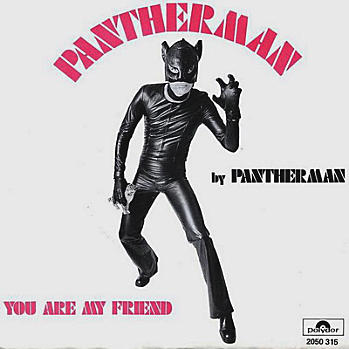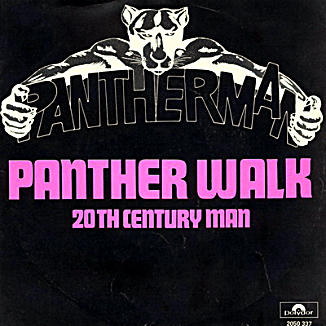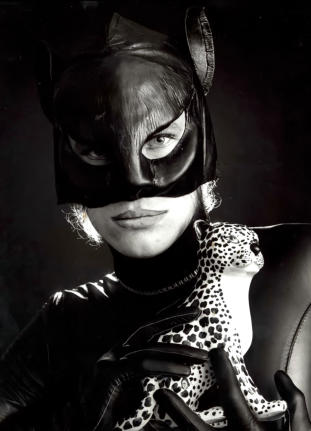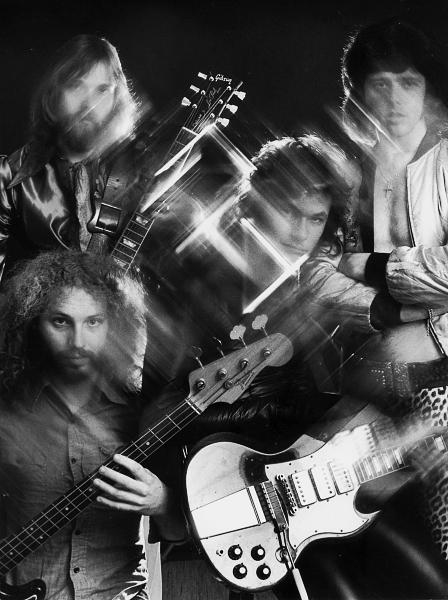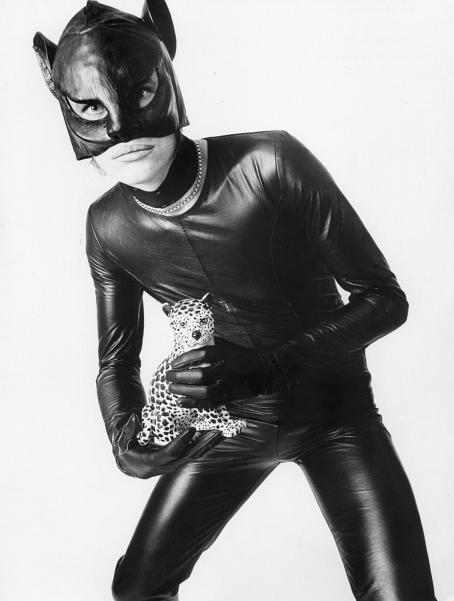

© Frank Klunhaar 2021
Pantherman
Glamrock one man band
The Pantherman idea and concept originated in 1974 after visiting a Roxy Music concert at the Doelen in Rotterdam with Leo Sayer in his Pierrot outfit as supporting act. Although most of the crowd wasn't really interested in Leo, I was rather impressed by his music and atmosphere and also enjoyed the extravaganza of the main act later that evening. Also I was inspired by the surrealism in the movie Satyricon by Frederico Fellini. In my technically somewhat limited home studio, equipped with a Uher 2 track recorder and various instruments including a drum kit, I started to make demos (sound on sound), also inspired by Todd Rundgren who played almost all the instruments on his recordings and the brilliant music on the underrated first album of American glam phenomenon Jobriath. Being 23 years of age, somewhat naïve and having just a little experience in the music business, I felt no artistic boundaries or limitations whatsoever at that time and recorded 10 songs, including “Pantherman” and “You are my friend”. The general direction was meant to be really loud rock on strong rhythms in combination with surrealistic, cinematic and theatrical experiences with sex, humour and sophistication. In short, raw power on a groove. A little later I was introduced to upcoming producer Shell Schellekens. That marked the start of a unique project that lasted for only one year and that now is getting the recognition it deserves. The singles trilogy The recording of the first Pantherman single took place at the well known GTB studio in the Hague. I was assisted by Frans Meijer on drums, a former colleague from the Jimmy Bellmartin Band and Polle Eduard on bass, a well known rock musician and former colleague of producer Shell Schellekens in several bands. The rest of the instruments I did myself, as well as all the vocals. When the record was released in May 1974 on Polydor Records in Holland, the reactions were rather mixed: one part of the "serious" Dutch media incrowd considered the record weird and somewhat offensive -the lyrics and vocals were too controversial for them-, another much smaller part was excited and thrilled. Three days after the release I was invited to do a -what was to become- unique TV performance on the progressive VARA show 'Nederpopzien' and because my management insisted on a specially developed choreography by a professional ballet dancer instead of performing with a rock band, I appeared alone on a small stage in the studio and did my thing just accompanied by some palm trees that were later completely demolished by Iggy Pop in another legendary TV appearance. As a result of all this, the single was also released in Belgium on Polydor and in Germany on Metronome Records and entered the bubbling under charts. France followed later. Unfortunately the management company suddenly stopped their activities shortly after the release and I was on my own again. Glamrock consisted -in the perception of most pro's in the Dutch and continental European music business and the general public- of the single successes by the mainstream glam acts in the top 40 and based on that Polydor insisted to become more commercial instead of developing the concept into a more album oriented direction. With my current knowledge of the music industry I consider this as a blatant lack of A&R vision that unfortunately -in retrospective- severely damaged the potential of the original idea. Because I had no management and also had the ambition to produce my own records, I started to make somewhat more commercial demos at the Relight Studio in Hilvarenbeek, a small 8-track studio with a very specific sound that was at that time not yet into rock music. In co-operation with owner/engineer Dick van Velden I recorded the follow up single “Panther Walk”, for which I tried -with a twist- to integrate the funky grooves of the JB's into the basic rock & roll and jungle drums feel of Bo Diddley and during these recording sessions I did play all the instruments. Relight would a little later become a world famous recording studio where Genesis, Peter Gabriel, Boomtown Rats, Robert Fripp, Black Sabbath and many others came to record and I became their staff producer in 1976. Polydor suggested to form a band and start touring upon the release of the third single "One Man Band", which title now seems rather contradictionary. At that moment I also decided to put down the Pantherman mask because the concept had not proven very successful. I rehearsed two or three times with a couple of local musicians that I knew and they also appear on the sleeve of the record, such as the earlier mentioned Frans Meijer on drums, Floris Tuk on guitar (the nice backwards solo on the A-side is his) and bass player Jan Hendriks, later guitar player of one the most famous Duch bands ever called Doe Maar.